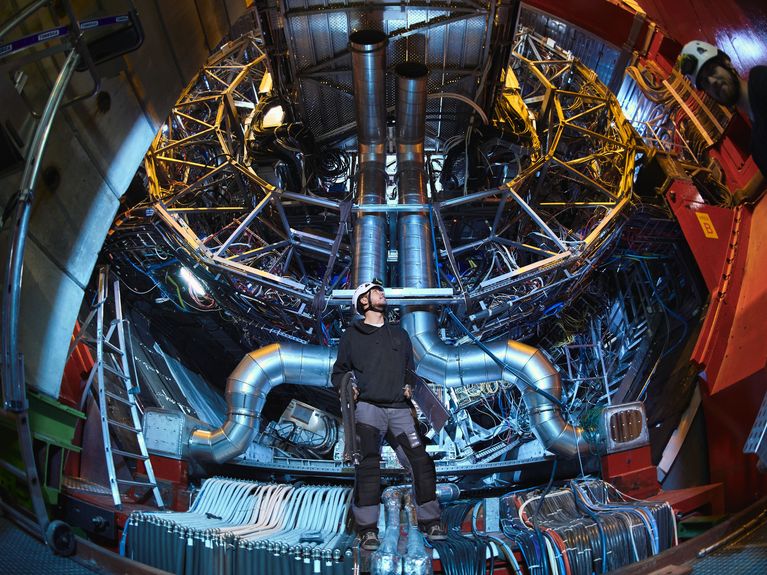
Challenge #101
Photographing the Big Bang.
When heavy atomic nuclei collide at the highest energies, an extreme state of matter can be produced. This resembles the state of matter shortly after the Big Bang. We produce snapshots of such collisions to learn more about the past and the future fate of our universe.
Participating centers
ALICE is made of 10,000 tons of steel and weighs as much as the Eiffel Tower. This particle detector at CERN lets heavy atomic nuclei such as lead ions collide, using very high energy. In the process, matter heats up to temperatures of more than two trillion degrees Celsius – that is, 100,000 times hotter than the interior of our sun.
This temperature and the prevailing density correspond to the state of the universe a few millionths of a second after the Big Bang. For a short moment, the atomic nuclei dissolve into their elementary components and quarks and gluons can move freely. We want to document this state of matter with ALICE and in collaboration with numerous international researchers. To do this, we take "snapshots" of the birth of our universe.
So far, ALICE has been able to generate 10,000 collisions per second. The system, which was upgraded with the help of researchers at the GSI Helmholtz Center for Heavy Ion Research, records 50,000 collisions of lead nuclei and will thus decisively enrich our knowledge of the universe.
(Photo: J. Ordan/CERN)